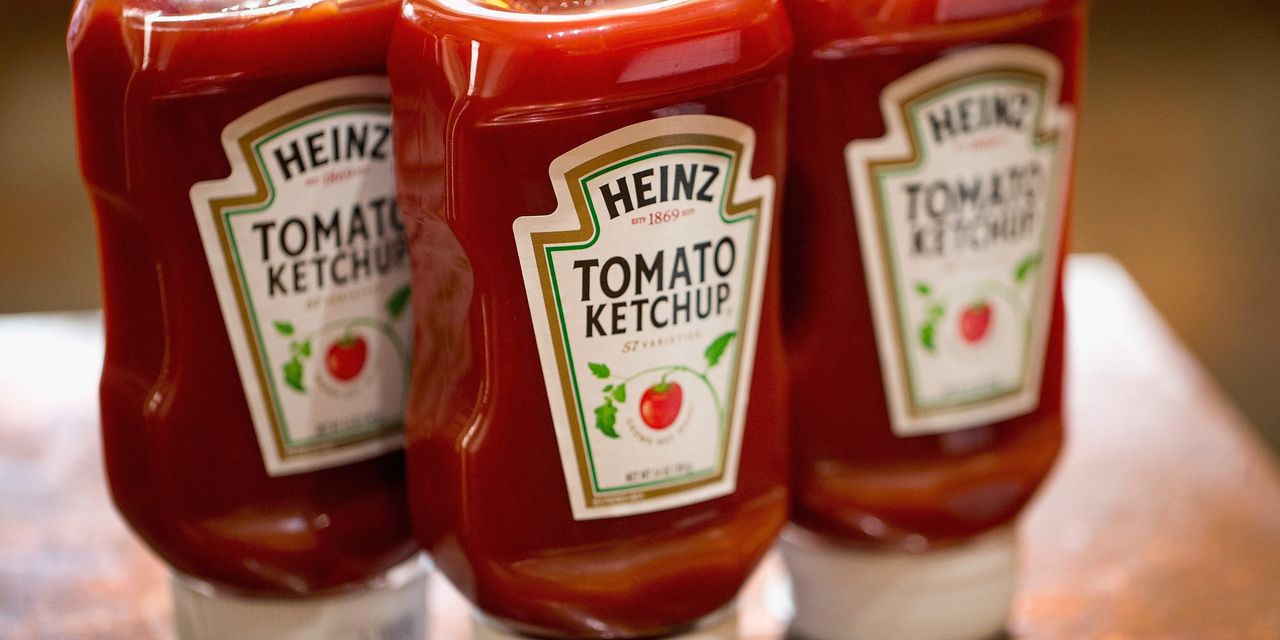Kraft Heinz Co.’s results benefited from price increases in the latest quarter, but those results weren’t enough to satisfy Wall Street.
Shares of Kraft Heinz
KHC,
were down about 1% midday Wednesday, even as the company easily topped earnings and revenue expectations while disclosing that its third-quarter prices were up by 15.4 percentage points from a year before.
“If you might remember, we have executed a new price increase in the month of August, and the elasticities turned out to be stronger than what is anticipated, which resulted in strong top line,” Global Chief Financial Officer Andre Maciel said on the company’s earnings call, according to a transcript from AlphaSense/Sentieo.
He went on to say that even as the packaged-food giant has raised prices, it hasn’t observed a noticeable gap between its prices and those of private-label brands, “except to catch up on Lunchables.”
Overall, “food is proving to be very resilient,” as are Kraft’s brands, he said.
At the same time, the company is dealing with supply-chain issues.
“You can see that the environment continues to be challenging,” Carlos Abrams-Rivera, the company’s president for North America, told investors on the earnings call, noting that Kraft has experienced “about 80% of those challenges … really due to upstream supply distribution on ingredients and certain packaging materials.”
Bernstein analyst Alexia Howard highlighted that the company “seems to be navigating the ongoing supply chain disruptions fairly well,” since it showed positive growth in underlying earnings before interest, taxes, depreciation, and amortization (Ebitda) “despite intense input cost pressures.”
Still, she sees a mixed outlook for next year.
“On the one hand, 2023 could look quite promising as supply chain and input cost pressures ease, and margins could rebound if pricing remains relatively sticky. On the other hand, the volume outlook remains somewhat uncertain, as the competing effects of emergence from the pandemic and the economic slowdown which are currently leaning in favor of food at home could swing in favor of eating out next summer,” Howard wrote.
On the topic of pricing, she mused that retail stores might not like to see “broad-based reductions” that would chip away at their own comparable-store-sales trends but noted that “we could see some give back on pricing next year from these unprecedented levels in categories that are less on trend with consumers.”
Even the company’s outlook for the rest of this year carries various puts and takes. Kraft Heinz raised the lower boundary of its adjusted Ebitda forecast and now expects $5.9 billion to $6.0 billion, rather than $5.8 billion to $6.0 billion. But the company also said it anticipates falling toward the lower end of the new range.
“While this is in line with consensus of [$5.878 billion] for the full year, at the low end it implies [$1.640 billion] for [the fourth quarter], ~4.5% below consensus expectations, although we suspect this may be a little conservative,” Howard wrote.
Shares of Kraft are off 5% over the past three months, while the S&P 500
SPX,
has lost 2%.
